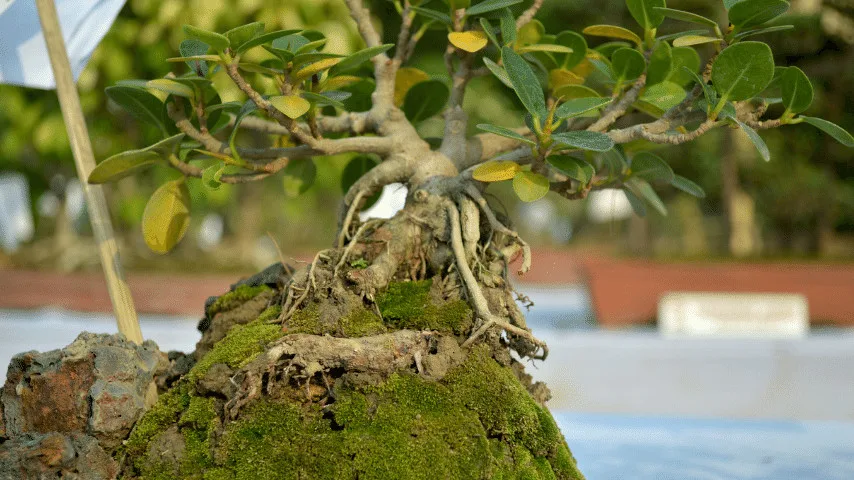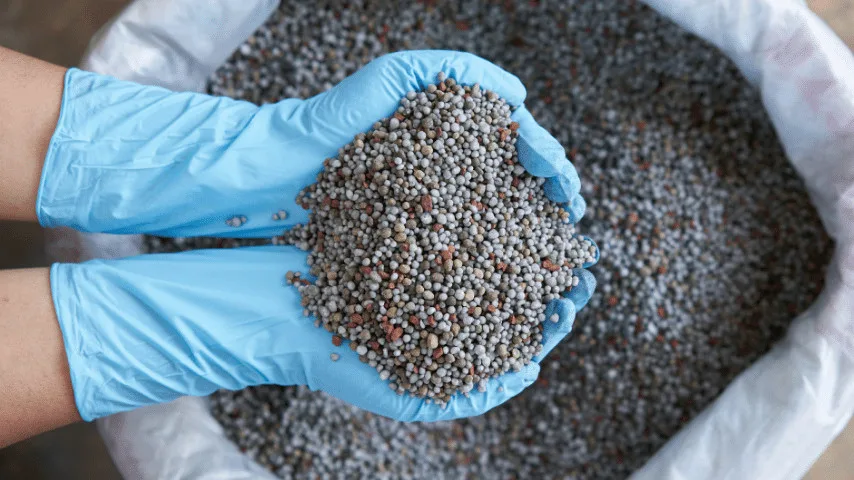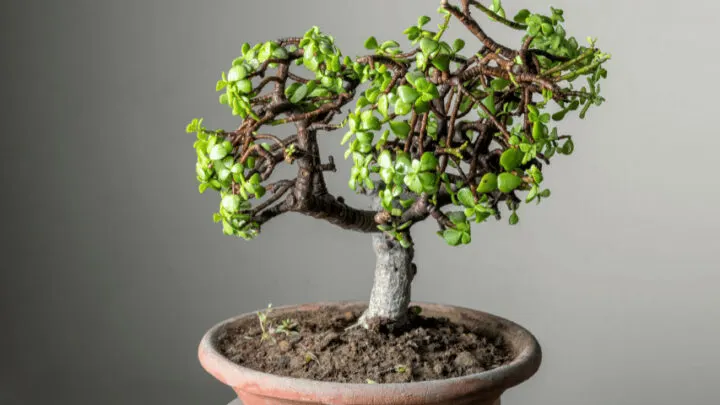How to Bonsai a Jade Plant? Crassula ovata, known as the Jade plant is a popular houseplant as it is easy to care for.
Ovata means egg-shaped. It refers to the thick, meaty leaves according to NC State University.
It is also called the friendship plant with succulent shrubs, wooden branches, and shiny greenish thick oval leaflets (up to two inches in length) that are usually cultivated inside.
The presence of Jade, mostly in-home or workplace, has been seen to bring luck.
This lovely plant represents development and rebirth and looks a lot like Jade money or gemstones, representing riches and success.
But how can you turn a Jade plant into a Bonsai? This is what this article is all about.
How to Bonsai a Jade Plant?
To get started with a bonsai Jade plant, you first need to prepare your gear and also sterilize the tools. The next step involves choosing an appropriate container and the shape you want to give your Jade plant. Then you trim the roots, repot it and manage its branches. This is followed by proper fertilizing and watering.

How to Bonsai a Jade Plant
Table of Contents
Steps to Bonsai a Jade Plant
Step 1: Wear Your Protective Gear
Before dealing with potting mixes, sterilizing chemicals, or sharp instruments, put on some protective gear.
This involves using masks, protective goggles, and gloves that have a strong grip.
The fluid from the Jade plant does not necessarily create any harm, but it will be helpful to shield your eyes and skin.
Not just that, the protective gear will also protect you from other harmful and harsh chemicals you use during the whole process

Protective Gear will also protect you from other harmful and harsh chemicals
Step 2: Choosing the Container That Will Be Used for the Bonsai Jade Plant
To have an excellent and balanced bonsai use a container or pot that is the same as the previous pot in which your plant was growing.
The robust stem and branches of a Jade plant require a deep container.
If you bought a Jade plant in a larger container than your bonsai pot or container, you will have to trim the roots as required and curve them out horizontally to fit this into the pot.

Balanced Bonsai use a container or pot that is the same as the previous pot
Step 3: Choose the Bonsai Shape for the Jade Plant
Various classic bonsai forms can be used to style a Jade plant, such as bending or a casual upright style.
However, trimming it to a classic bonsai shape will help fit the classic Jade plant‘s robust stem and fleshy, spongy spherical leaves.
Step 4: Cutting and Using a Vinyl Mesh
To avoid soil from running out when irrigation, trim tiny strips of vinyl mesh a bit bigger than the drain openings and put them above it.
Make rings at each side of a 6-inch strip of wires, making the gap between both the loops the exact diameter as the drainage holes.
Put the wire on the exterior of the planter’s bottom, with the coils on the corners and the ends sticking over to the interior.
Curl the cable tips over to fasten the mesh over the opening on the inside of the container with the cables protruding from the mesh.
Step 5: Trimming off Extra Roots and Branches
Trim the branches and roots to suit the bonsai pot of your choice. Trim any huge roots that are decaying or spreading downwards.
Likewise, cut off the branches that are drooping, withered, or diseased.

Trim the Jade plant branches and roots to suit the bonsai pot of your choice
Step 6: Shaping the Jade Plant According to your Desired Shape
To make your Jade bonsai suit the pattern, bend and cut shoots that are emerging in the unwanted areas.
Trim the limbs parallel with and not into the strong stem of the Jade plant with pointed, sterilized pruners.
If you cut too thoroughly, you risk leaving scars. Jade plants are durable, so they do not have to be sealed after cutting.

Bend and cut shoots that are emerging in the unwanted areas using Bonsai tools
Step 7: Managing the Branches
Use careful wiring to manage your bonsai. To keep the Jade in place, wrap aluminum wire all around branches and stretch it into the form you choose.
Stretch the branches of the plant out in the planter. Cover the planters halfway with bonsai soil, allowing a half-inch gap between both the soil and the planter’s base.
Winter and fall are the best time for wiring the plants.
Step 8: Maintaining the Bonsai Shape
Since the Jade plants take a long time to mature and are slow growers,
just pinching down or pruning either once or twice throughout the growth period is required to keep the bonsai in shape.

Jade plants take a long time to mature and are slow growers
Step 9: Fertilize the Plant to Help It Grow
Fertilize once or twice a month throughout the spring and summer vegetation period, but not during the wintertime.
Observe the packaging guidelines when applying a mixed powdered fertilizer to the soil.
After fertilizing, always water and use grass or tiny stones to overlay the dirt.

Fertilize once or twice a month throughout the spring and summer
Step 10: Watering, but Not Excessively
Keep the Jade bonsai well water to prevent it from withering out. Make sure you do not overwater it.
Let the moisture evaporate out a little during watering before adding quite enough moisture to wet it.
During the cold months, irrigation should be reduced. Carefully wet the area till the extra water flows out the bottom.
Place the plant in a bright spot that gets some evening shadow.
Step 11: Repotting of the Jade Plant
You can replant the Jade bonsai plant over a couple of years in the spring or summer season after it has developed itself in the pot.
After repotting, allow the plant a few days to adjust but frequently feed it before you start a regular feeding schedule.

You can replant the Jade bonsai plant over a couple of years
Frequently Asked Questions About How to Bonsai a Jade Plant?
Why Do the Leaves Fall Off After Turning into a Jade Bonsai Plant?
Jade leaves can start to fall due to overwatering or dryness, insufficient nitrogen, or a shortage of sunshine.
Mealybugs are also among the contributing factors. Using a cotton bud soaked in ethanol, kill the insects by hand.
Continue treatment weekly so that no insects remain.
How Do You Form a Jade Bonsai Plant the Best Way?
To keep the size and density of the leaf’s shoots under control, cut Jade either once or twice a week.
Pull off big leaflets or blade shoots developing in inconvenient areas, including the lower stem of the Jade plant.
To induce the growth of new leaf openings, snip the tips of leggy branches.


